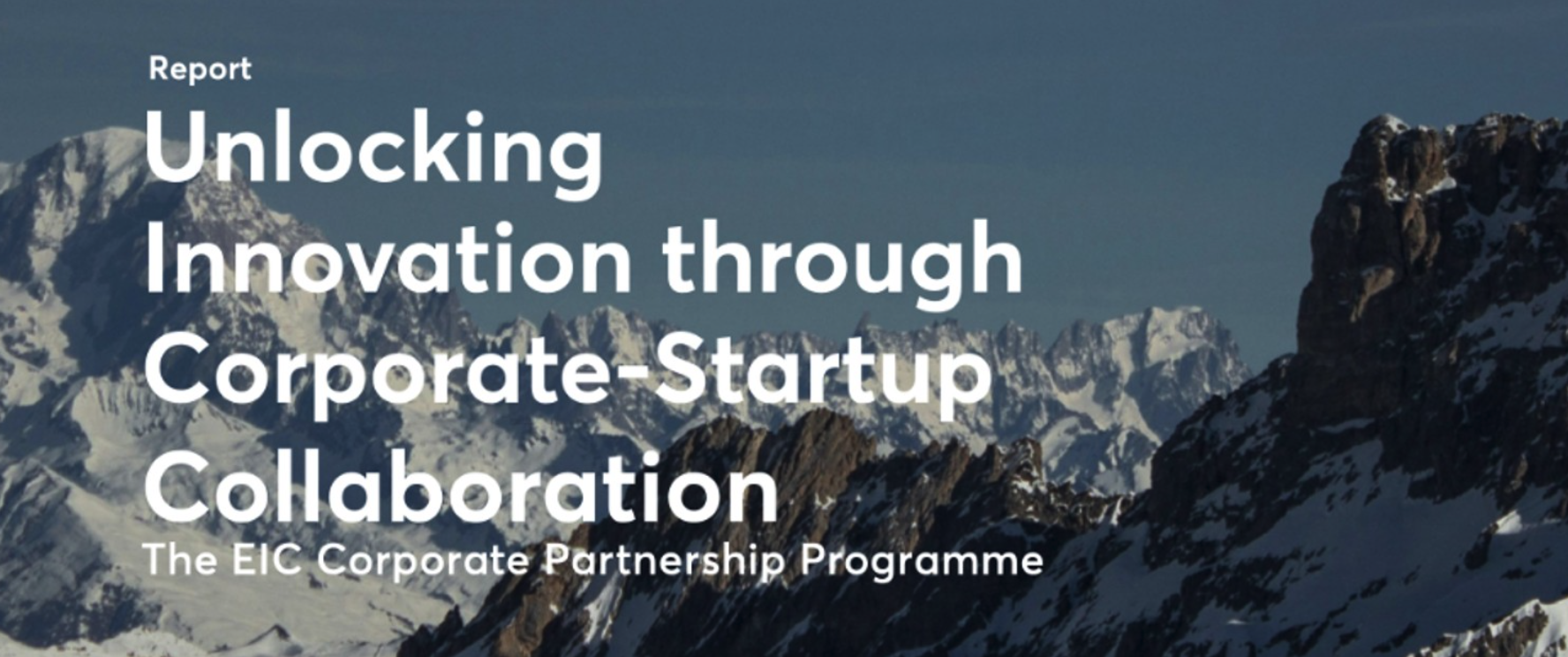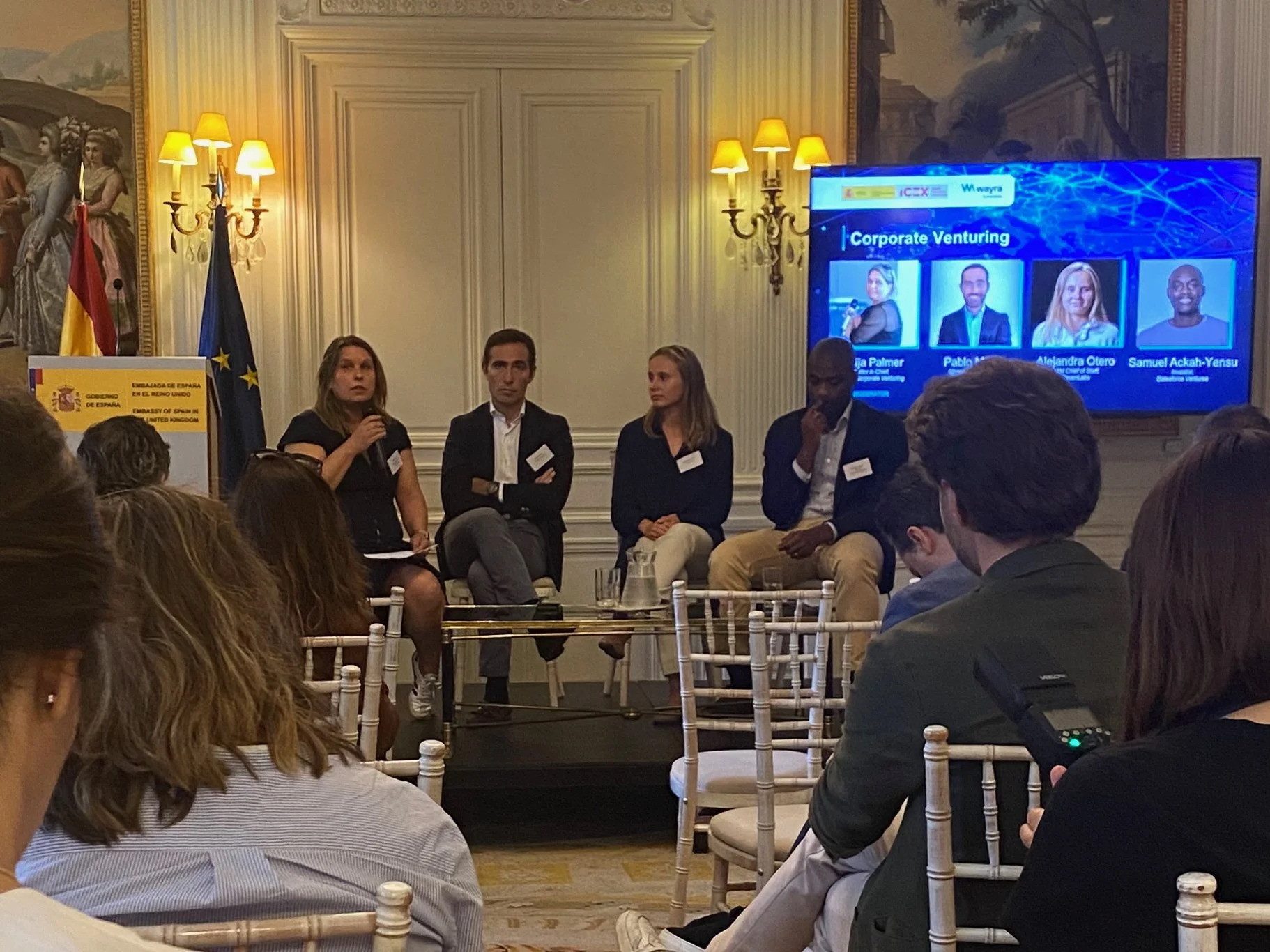How the EU Will Drive Growth Through Corporate Venturing
Earlier this week, the European Innovation Council’s (EIC), released its Corporate Startup Collaboration report, which shines a light on something many have long argued: Europe’s future competitiveness in deep tech depends not just on research or investment, but on how well startups and corporates work together, and how that collaboration is governed, communicated, and incentivised.
The findings make for encouraging reading. Since 2017, the EIC’s Corporate Partnership Programme (CPP) has supported over 1,500 collaborations between startups and more than 120 major companies, including Airbus, Holcim, Galp, and Clariane. These relationships have delivered measurable results, with 97 business deals signed and a 92% satisfaction rate from participating startups.
Yet, while the volume of engagements is growing, the structure needed to support long-term impact — trust, alignment, strategic communication, and incentives — is still not fully in place. If Europe, including the UK, is to lead in scaling deep tech, we must close this gap.
Europe, while making progress, still sits behind both the USA and leading Asian economies in corporate venture capital (CVC) engagement. As an example, in 2024, global CVC-backed funding reached approximately $186 billion, but the USA accounted for over $107 billion of that, compared with only around $30 billion in Europe and a further $39 billion in Asia-Pacific ($30.3 billion and $39.5 billion, respectively). Moreover, U.S. CVC involvement occurs in roughly 32 % of all venture deals, whereas Asian CVC participation peaks at approximately 39 %, and Europe lags behind. That digital deep‑tech investment gap is even more pronounced: between January and September 2024, U.S. deep‑tech startups attracted about $52 billion, in contrast to only $14 billion in Europe and $13 billion in Asia. These disparities reflect deeper structural divides. While Europe’s 10-year CAGR for VC has outpaced other regions (13%, compared with 8% for the U.S. and just 2% for China), absolute funding remains far below the scale needed for global leadership.
Looking at where Europe is compared to the US or Asia, there is a gap that needs to be closed, and if this is achieved, it can deliver growth for European and UK businesses.
Reading the report, we look at the challenges and opportunities as well as what levers policymakers need to pull in order to unlock greater value for corporates, startups, and the public.
Strategic collaboration, not matchmaking
Unlike typical matchmaking programmes, the EIC Corporate Partnership Programme is structured with rigour. Its 10-step process takes place over 4 to 6 months, from open calls and tailored scouting to intensive preparation, one-to-one meetings, and post-event follow-up.
Companies are required to sign a declaration of intent and dedicate internal teams to the process. Startups receive mentoring and coaching before meeting potential partners in curated formats, either single-corporate or multi-corporate days. The most effective outcomes, according to the EIC, come from in-person, single-corporate events where one-to-one time and focused discussions can take place.
This matters. Deep tech isn’t like consumer apps. Startups need corporates for regulatory access, pilot opportunities, supply chain scale, and credibility. Companies need startups to deliver novel IP, fresh business models, and the agility to challenge internal orthodoxy. When structured well, this can be transformational.
Aside from capital, which is critical for innovation, what corporates offer start-ups in deep-tech and other sectors is industry and knowledge that can help start-ups scale quickly and at pace. At the same time, Europe, as a mix of different cultures, can better adapt its propositions for growth in other international markets, because culture, like trust and reputation, matters.
Where success is happening
According to the report, successful collaboration stems from four strategic pillars:
Strategy: Companies must define internal innovation goals and align them with startup engagement. This includes governance models, milestone planning, and IP strategy.
Commitment: Buy-in from top leadership is non-negotiable. Without executive support and internal champions, efforts are often diluted or delayed.
Skills: Companies must have the ability to absorb startup innovation through not just legal, technical, and operational interfaces, but also the internal culture of entrepreneurship and risk-taking.
Experimentation: Effective partners run proof-of-concept pilots and establish learning loops, turning each engagement into a foundation for future growth.
These pillars are not unique to Europe, but the structured implementation within the CPP is notable. Corporates like Holcim, which partnered with EIC-backed startup Nanolike to transform logistics and supply chain operations, provide strong case studies. Galp, the Portuguese energy major, used the programme to explore AI-based predictive diagnostics for its refineries.
However, many of these success stories are undercommunicated. And that’s a missed opportunity.
A failure to communicate innovation and change limits the reach and influence that innovation delivers. Perception matters, not just in how products or partnerships are viewed, but in how investors, partners, regulators, and talent judge a company’s long-term relevance.
In the absence of clear, confident communications, others will fill the void with assumptions, outdated narratives, or scepticism.
It is a company's responsibility to shape how it is perceived, not only to maximise the impact of what it is doing today, but to build a sustained reputation that earns trust over time.
Strategic positioning and consistent communication are not short-term PR exercises; they are long-term investments in credibility, stakeholder alignment, and market access. Corporates that fail to articulate their innovation journey risk being excluded from critical opportunities, whether it’s future funding rounds if they’re start-ups, regulatory influence, or the next generation of partnerships that will define industry leadership.
The perception gap: Strategic communications is underused
One of the most striking points from the report, as well as from conversations I’ve had with companies, investors, and policymakers across Europe, is that these programmes often suffer from a lack of narrative. In other words, the innovation is happening, but the world doesn’t see it.
To build ‘reputational capital’ around innovation, European companies and governments must communicate three things clearly:
What challenge are they solving
Why was this startup selected
What was learned, even if the result wasn’t a deal
When communicated well, in owned channels, in trade media, and through C-suite commentary, these collaborations reinforce the credibility of both the startup and established companies. They also serve as powerful soft power tools for nations. In global markets where reputation is often a proxy for reliability, stories of successful, ethical, and innovative collaboration matter.
Look at countries listed in the WIPO’s Global Innovation Index, and you start to see a pattern of which nations deliver greater returns from their business community and the innovation they invest in.
Strategic communications also play a critical role in building trust, a currency that startups desperately need when working with large organisations. When a company publicly commits to a programme like the EIC CPP, shares its governance model, and highlights its innovation roadmap, it becomes a more attractive partner.
Where challenges remain
While the EIC CPP is performing strongly, the report outlines several areas that still require work:
Fragmented engagement: Many corporates participate at the business unit level, without aligning the entire organisation or integrating startup engagement with broader R&D or commercial strategies.
CVC under-utilisation: Despite some notable players, many European corporates still treat venture capital as a reactive or PR-driven activity, rather than a strategic lever. Only a minority have established CVCs with genuine autonomy or multi-year mandates. And yes, there is a gap between the timelines for returns from R&D that is held internally within a corporate and a CVC, which looks more at medium and long-term returns.
Mid-tier corporates missing: The programme remains heavily skewed toward large, well-resourced firms. Mid-sized companies, often the biggest employers in Europe, are largely absent. Equally, universities and the research they deliver can form part of a bigger ecosystem of innovation that companies can access in specific markets.
Lack of incentive alignment: Many corporates lack fiscal incentives to invest early or take risks on pilots. The thinking here is on trying not to fail with investments, a very different way of thinking than that of the US and China, where knowledge is gained to help innovation. Without capital leverage or tax relief, investment teams remain cautious.
These challenges are solvable. But they require policy engagement and a change in culture within the European C-Suite, which, understandably, focuses on short-term returns to shareholders because it has failed to communicate its longer-term vision and the opportunities for growth that it aims to unlock through CVC and risk-taking.
Time for fiscal alignment: tax incentives as a growth lever
If Europe wants more corporates to behave like investors, they must be treated and rewarded like investors.
At present, R&D tax credits are often geared toward internal innovation. What’s missing is a modernised approach that reflects the reality of open innovation ecosystems. The following mechanisms could unlock significant corporate capital:
Enhanced R&D deductions for corporates engaging in externally sourced innovation via startups.
CVC investment credits, similar to angel or EIS-style schemes, where equity investments in early-stage deep tech firms deliver a fiscal benefit.
Accelerated depreciation for capital assets developed or acquired via startup partnerships.
Public-private match funding for corporate-led proof-of-concept pilots with VC-backed startups.
Internationally, Canada’s Innovation & Skills Plan and US state-level tax incentive schemes (e.g. in New York and California) offer playbooks that the EU and UK can adapt. They align fiscal tools with the innovation lifecycle, from ideation and R&D through to commercial scale.
The UK’s return to Horizon Europe offers an important bridge here. Through Innovate UK, British corporates can now collaborate more easily with EU partners, aligning funding streams, co-investment opportunities, and tax incentives across borders. Yet, given the volume of capital that exists in the UK, more policy is needed to unlock companies, especially UK companies, as investors in growth, which in return delivers not just shareholder value but also jobs.
Policy today needs to be more about the road to delivery!
Positioning matters — for nations, not just firms
Europe is in a global race for capital, talent, and credibility in deep tech. Positioning matters.
We are competing not only with North America, but increasingly with ecosystems in Singapore, South Korea, and the GCC, including nations like Saudi Arabia, the UAE and Qatar, which are leveraging geo-economic capital. In these markets, government strategy, policy, communications, and private capital work hand in hand.
Singapore’s ecosystem, for example, aligns its Global Innovation Alliance with its Economic Development Board, sovereign funds (like GIC and Temasek), and major corporates. The result is a cohesive narrative that attracts startups and reassures global investors.
In contrast, Europe’s narrative is fragmented. Innovation policy often lives in one department, investment incentives in another, and corporate collaboration in a third. The result is missed opportunities.
The UK has been working under Labour to avoid repeating the mistakes of the past by creating its new Industrial Strategy in a more strategic manner. Yet, it overlooks CVCs as a lever for investment and growth.
By aligning messaging, offering clear fiscal pathways, and spotlighting success stories, the EU and the UK can project a stronger voice on the global stage, especially at a time when American researchers are being challenged and are looking for growth opportunities at home within UK and European universities.
As a side note, here in the UK, the narrative has been about non-doms leaving the UK, while ignoring that high-net-worth (HNWI) and ultra-high-net-worth individuals (UHNWI) and their respective family offices are moving from the US to the UK.
Six recommendations to unlock greater value
Professionalise strategic communications: Corporates and governments should treat startup collaborations as reputation assets. Assign advisory and communications teams to every pilot, and publish insights, even if a deal isn’t signed.
Expand participation to mid-tier firms: Offer tailored entry points for mid-size corporates, possibly through industry clusters or trade bodies, supported by lighter-touch onboarding.
Create fiscal incentives for CVC activity: Link tax credits directly to startup co-investment or collaboration, rewarding corporates for deploying capital and taking product risk. And think beyond tax credits to incentivise investment in innovation.
Integrate evaluation and learning: Introduce a shared framework across EU and UK corporates to evaluate what works in collaborations. Use these insights to improve programmes annually.
Establish thematic CEO summits: Convene Horizon-aligned innovation leaders across energy, biotech, quantum to set strategic goals and unlock institutional alignment. Tasks that the UK’s Department for Science, Innovation and Technology is doing.
Share lessons globally: Position EIC CPP and other initiatives as international models, inviting participation from corporates in Japan, the US, the GCC, and beyond. Communications and engagement is critical in private settings and at public events. Learn how to sell the UK and Europe and the values that it has.
Final thoughts
The EIC’s Corporate Startup Collaboration report isn’t just a snapshot of what’s working — it’s a blueprint for what’s possible.
To turn these partnerships into national competitive advantages, we need to align our policy, positioning, and communication. We must reward risk, showcase results, and utilise strategic communications as a growth engine, not an afterthought.
Europe and the UK have the science, the talent, and now the frameworks. What they need next is coherence and collaboration in how we support innovation, how we discuss it, and how we incentivise it.
That’s how we unlock growth!
I work with governments, investors, and corporate leaders to help them sharpen their positioning, communicate with impact, and build the kind of reputational strength that drives long-term value and trust.
If you’re leading in corporate venturing or managing capital through a family office and want to strengthen your reputation and influence, let’s connect.
Please feel free to connect or share this with your network, who may benefit. And subscribe to my LinkedIn Reputation Matters newsletter. Or connect with me on LinkedIn.





